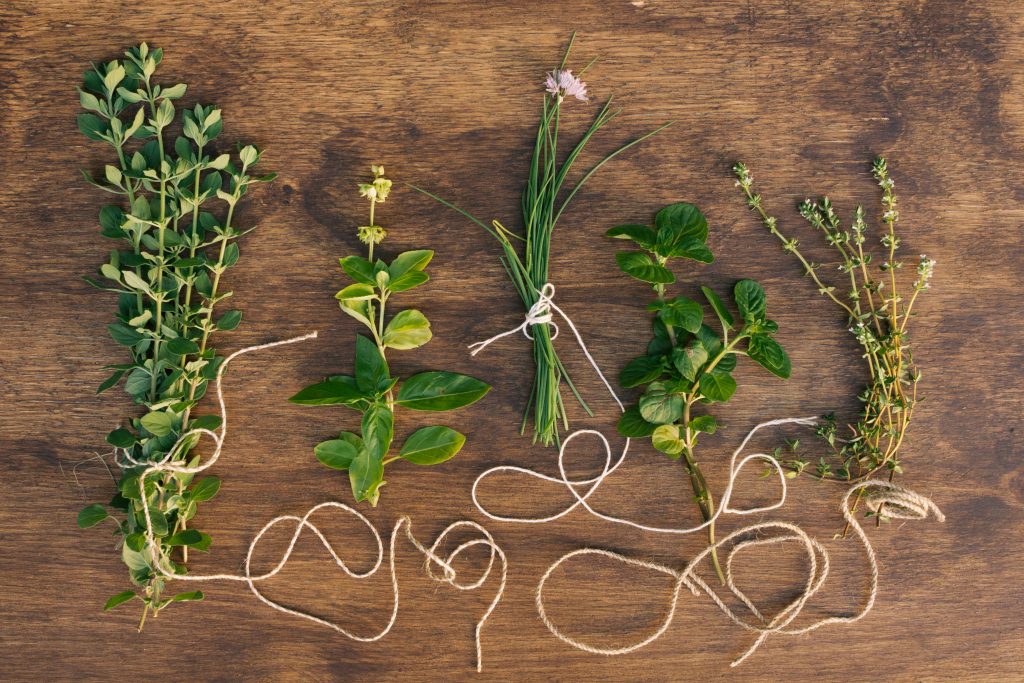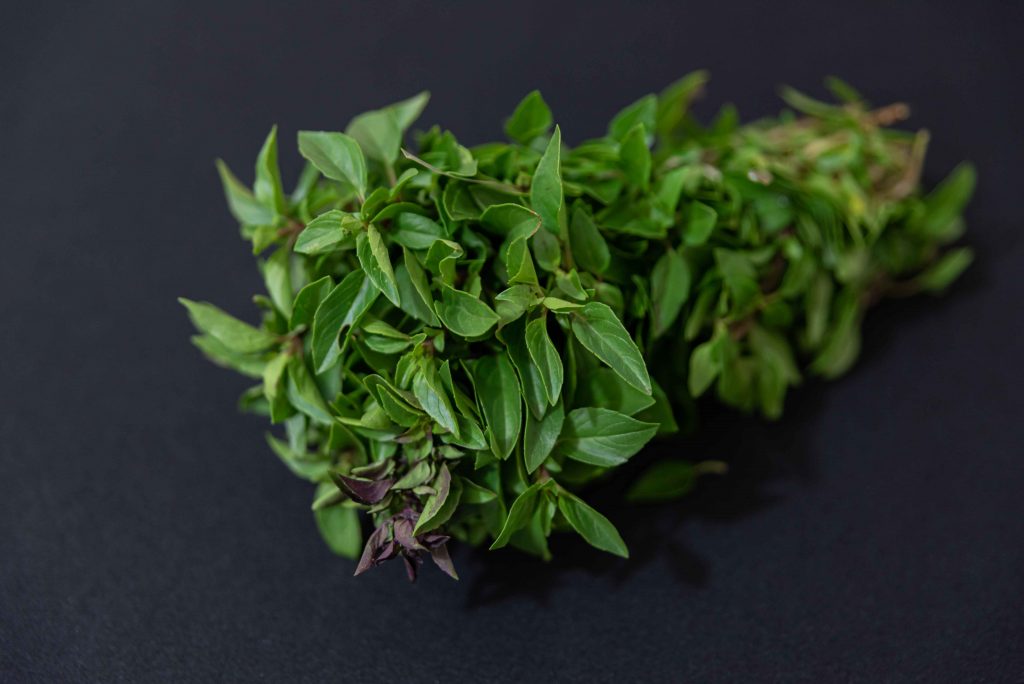Marjoram is a significant ingredient in a wide range of cuisines worldwide. This mint family herb, frequently used in Middle Eastern and Mediterranean dishes, has a unique ability to transform any dish into something extraordinary. However, when marjoram isn’t available, knowing the best marjoram substitutes can help you maintain the flavor and essence of your recipe.
There’s no need to be a professional chef or a foodie to know that your food’s flavor matters. Whether you’re cooking for yourself or your family, one of your goals in the kitchen is to consistently prepare a tasty dish that you actually want to eat. Typically, this involves using fresh local herbs and just the right amount of seasoning.
Whether you believe it or not, it’s something that every chef has to deal with at one time or another. We may have a larger selection of herbs than you do, but there’s no magic gremlin that guarantees we have every seasoning from every cuisine at all times. It doesn’t matter whether it’s a meaty dish, seafood, pasta, or sauce. Because of that, it can be beneficial to know about marjoram substitutes when you are preparing Eastern recipes that require a dash of the herb.

What is Marjoram?
Marjoram is a perennial herb of the mint family native to the Mediterranean and parts of Asia and Africa. Many ancient civilizations regarded it as the symbol of happiness. Little clusters of fuzzy green leaves resemble knots, which is why it is sometimes called “knotted marjoram.” Origanum is a genus of 40 species, but only one is considered true marjoram. All the rest are known as oregano.
Marjoram Shape: How Does It Look?
Marjoram is a visually appealing herb with small, ovate leaves that are smooth and slightly fuzzy. The leaves typically range from 0.2 inches to 0.6 inches in size. Fresh marjoram leaves are green and vibrant, while dried leaves retain a muted green hue but remain highly aromatic.
This aromatic herb shares a similar appearance with oregano, but its leaves are generally softer, less “hairy,” and lighter in color. Marjoram’s distinct fragrance makes it easily recognizable, even among other herbs. Beyond its culinary uses, marjoram is also popular in essential oil form due to its intense aroma and therapeutic properties.
Whether you’re using fresh leaves, dried forms, or its essential oil, marjoram’s unique characteristics make it a versatile addition to various dishes and recipes.
Marjoram in Culinary Uses
Among other things, marjoram is used to season soups, stews, salads, sauces, and dressings. You can also make tea out of it. Sprinkling a dash of marjoram on roast venison is enough to indulge in your favorite meals.
Marjoram versus Oregano
Marjoram and oregano both come from the same family of plants. In fact, the fresh herbs even look and smell similar. Although oregano has a bit stronger flavor, it is thinner and has less “hair” on the leaves. Every herb lends a distinct flavor to your dish, with oregano having a strong pizza flavor. Marjoram and oregano are both essential spices in Italian seasoning blends. However, when marjoram is rarely on hand, using alternatives for marjoram is the best solution to enjoy your flavored Italian seasoning. Also include red chili flakes, parsley, and garlic powder.
Dried or Fresh
Marjoram is available in three main forms: fresh leaves, dried (whole or ground), and essential oil. Each form offers unique benefits depending on the dish you’re preparing:
- Fresh marjoram leaves: These are vibrant and aromatic, making them ideal for seafood dishes, grilled meats, and salads. They provide a delicate, herbaceous flavor that enhances light and fresh meals.
- Dried marjoram: This is more concentrated in flavor compared to the fresh form, making it perfect for soups, stews, casseroles, and sauces. It blends well with slow-cooked dishes where its aroma can deepen over time.
- Marjoram essential oil: Used sparingly, this form works well in sauces, marinades, or dressings for a concentrated burst of flavor.
When deciding which form to use, consider the texture and flavor profile of your dish. For recipes where a subtle, fresh flavor is needed, fresh leaves are best. Dried marjoram, however, is more versatile for cooking, as it can withstand higher heat and longer cooking times. By understanding the strengths of each form, you can ensure that marjoram—or its substitutes—elevates your dish to the next level.

List of Marjoram Substitutes
Choosing the right herb to replace marjoram depends on your dish. What makes the ingredient stand out from the rest? Replace fresh marjoram with a fresh substitute if your recipe calls for it. Nevertheless, if your recipe calls for dried marjoram, substitute a dried alternative. Take a look at this list of marjoram substitutes.
1. Oregano
The first item in the list of marjoram substitutes goes to the oregano. As mentioned above, it is similar in taste and aroma to marjoram. This leads to confusion between the two herbs. Both fresh oregano and fresh marjoram can be used in the same way, and the same goes for the dry versions as well.
You can generally substitute one teaspoon of marjoram for the same amount of dried oregano. A dash of marjoram gives an aromatic flavor to meats such as beef, pork, and chicken and is used to season a stuffing. You can find fresh and dried oregano in the spice or produce section of any grocery store. The flavor of oregano is more aromatic and spicy than that of marjoram, so taste it as you cook.
2. Thyme
It is an excellent addition to beef, chicken, and pork roasts, stews, and casseroles. It brings a very mild flavor and aroma somewhat similar to marjoram. If using dried or fresh thyme, use the same amount you would for marjoram.
Try your local grocery store’s produce section or a farmer’s market for thyme. The versatility of thyme makes it popular in French, English, Swedish, and Italian cuisines. Make sure not to miss the eternal sunshine of the spotless thyme flavor on your homemade organic pasta!
3. Sage
Sage is a common spice with citrus and pine notes for plenty of dishes such as chicken, pork, stuffing, and roasts. In fresh sage, use the same amount as you would in marjoram. In the case of the dry kind, use half the amount. Potatoes, pasta, and cream sauces are also good dishes to use sage in as marjoram substitutes. Make sure not to miss poultry seasoning containing rosemary, thyme, marjoram, and black pepper.
4. Dry or Ground Basil
Since fresh basil would change the flavor profile too much, fresh basil is not an option here for marjoram substitutes. If you want to use basil, use either dry or ground, which has an aromatic flavor and a slightly peppery taste. Incorporate basil into soups, baked pasta, and poultry seasoning mixes. Try the spice rack at the grocery store to find dried or ground basil. Adding thyme and sage is also a good choice.
5. Herbs de Provence
Herbs de Provence is a flavorful mix that naturally includes marjoram, making it a great substitute when you’re out of this herb. The blend typically combines dried thyme, oregano, marjoram, parsley, rosemary, and bay leaves, resulting in a robust and aromatic seasoning.
Since Herbs de Provence has a stronger aroma than individual herbs, use only half the amount specified for marjoram in your recipe. This mix is ideal for enhancing baked pasta, soups, roasted vegetables, or meats. It’s readily available in most grocery stores.

6. Tarragon
Although substituting marjoram with tarragon is not the best marjoram substitute, it may serve as a last-minute solution. If you are replacing marjoram with tarragon, use it sparingly because it has more pungent licorice and an earthy flavor. Add it to sauces and soups, and create a seasoning mix. Both fresh and dry tarragon can be listed as marjoram substitutes. You can easily find tarragon at most grocers.
7. Dried Lemongrass
The 7th choice in the list of favorite marjoram alternatives goes to the dried lemongrass, as its flavor is highly intense and citrus, so it doesn’t work in every dish. You can add dried lemongrass to soups, sauces, and baked goods to give them a floral aroma.
Dry marjoram is like marjoram, while fresh marjoram is too strong. You can find dried lemongrass in some grocery stores or organic markets, even though it is not a common spice. It might be best to only add about half of what the recipe calls for due to its pungent flavor.
8. Summer savory
Summer savory is often compared to sage and is a well-known flavor in Canada. Hearty roast recipes and flavoring, and seasoning sausages are where to add summer savory. Dried or ground summer savory can only substitute for marjoram.
9. Lemon thyme
The citrus notes make lemon thyme a friendly alternative for marjoram substitutes, especially for the Lebanese lentil soup that calls for the addition of lemon.
10. Za’atar
Za’atar, like Herbs de Provence, often contains marjoram, which makes it an excellent substitute for the herb. This Middle Eastern spice blend adds a tangy, herbal, and slightly nutty flavor to dishes. Commonly sprinkled on grilled vegetables or bread, it can also enhance soups and roasted meats. Use Za’atar sparingly at first, as its bold flavor can overpower subtle dishes. A small amount goes a long way in achieving a Mediterranean-inspired taste.
Health Benefits of Marjoram
Marjoram is not only a flavorful addition to your dishes but also a herb packed with health benefits. Rich in antioxidants and anti-inflammatory properties, it can help prevent chronic diseases like cancer and diabetes. Moreover, marjoram may support gut health by reducing bacterial overgrowth and fungal infections.
If you’re looking to explore how herbs like marjoram and proper nutrition can improve your overall well-being, consider consulting with online nutritionists who can guide you with tailored advice for your dietary needs.

Final Words
Although marjoram is not a commonly used herb, it remains a key ingredient in many delicious Mediterranean dishes. Adding just one teaspoon of marjoram to your European, Italian, or French recipes can transform them into culinary masterpieces with an Eastern touch.
If finding marjoram is challenging, don’t forget these top 10 substitutes. Each one brings its unique flavor to the table, ensuring your dishes remain flavorful and aromatic. What’s your favorite marjoram substitute? Do you have other alternatives that capture the essence of Mediterranean flavor? Share your thoughts in the comments below!
